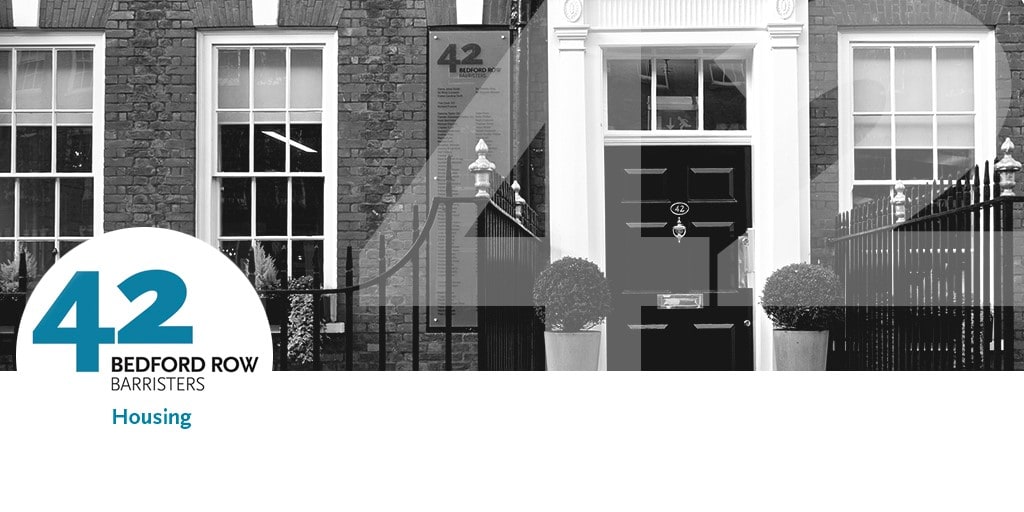
Housing Allocation Schemes under the Magnifying Glass
Martin Khoshdel discusses the recent High Court decision in R (Nur and Abdulahi) v Birmingham City Council [2021] EWHC 1138 (Admin)
The significance of this case cannot be underestimated – both legally and practically – in bringing to the fore the practical effects of Local Authority Allocation Schemes. This bulletin will pay particular attention to the reasonable adjustments requirements under Parts 3 and 4 of the Equality Act 2010.
What is the case about?
Birmingham Council is one of the largest providers of social housing in the UK; it faces a significant shortage of housing, and it has entered into partnership agreements with housing associations in order to meet the demand.
Mrs Nur lives in Birmingham with her 3 adult children, including her daughter Zakiya, who has cerebral palsy and learning difficulties. Mrs Nur is Zakiya’s full time carer. Mrs Nur and Zakiya registered on the Council’s Housing List in August 2011.
In late 2018, the Council accepted a homelessness duty towards Mrs Nur and her family, and granted her a tenancy of 89 Jervoise Road: this was a homelessness offer, not an allocation under the allocation scheme.
Under the allocation scheme, due to Zakiya’s disability, the family was assessed as eligible for a four bedroom “Mobility 2” property. 89 Jervoise Road was not suitable to occupy long term, because it was not adapted, and Mrs Nur was permitted to bid on 3- and 4-bedroom properties. From June 2019, she unsuccessfully bid on numerous suitably adapted properties. Her bids were “skipped” for a range of reasons – most importantly, she was not in a household with children under 18.
By virtue of section 166A(1) of the Housing Act 1996, every local authority is required to have a housing allocation scheme, and must allocate housing in accordance with their scheme. Males LJ in R (Flores) v Southwark LBC [2020] EWCA Civ 1697 explained that the scheme must be followed when established, and that the scheme would decide which applicant would be selected for a property, as well as where on the waiting list an applicant would be.
Birmingham Council’s scheme included a provision which came under scrutiny in Mrs Nur’s case: there would be a preference to allocate houses with two or more bedrooms to families with dependent children; while properties with adaptations would be allocated to persons with physical and sensory disabilities.
The use of the word ‘preference’ denoted an element of discretion, in deciding against allocating a house to a household with dependent children, where certain factors were prevalent.
Despite that, the High Court had found (in an earlier hearing in Mrs Nur’s case) that the scheme of giving “reasonable preference” to families with children under 18, when bidding on houses, effectively became a blanket policy.
Zakiya was a disabled person over the age of 18. Therefore, the scheme (and in particular its application) put Mrs Nur and others in her position, with adult dependants who were disabled, at the disadvantage of being extremely unlikely to secure suitably adapted accommodation. This was due to the shortage of available housing, and excessive demand, meaning that those with young and vulnerable children would always be prioritised, creating a vacuum for Mrs Nur and others in her position.
Mrs Nur’s solicitors presented ONS statistics, demonstrating that more disabled people live in social housing than non-disabled people, and that disabled adults over the age of 24 were more likely to live with their parents than non-disabled adults of the same age. The same was true of adults with learning difficulties. Cumulatively, the evidence demonstrated that, like Zakiya, disabled adults generally were more likely to live in a household without children than non-disabled adults.
What did the Court decide?
On the issue of indirect discrimination, the High Court held that the allocation scheme was a ‘provision, criterion or practice’ for the purposes of section 19 of the Equality Act, which did place Mrs Nur’s household at a disadvantage compared to a household without a disabled person.
The other elements of indirect discrimination were also well founded: there was a legitimate aim in seeking to ensure access to outside space for children under 18, but the Council could not satisfy the Court that its allocation scheme (and the application of it) were a proportionate means to achieve this legitimate aim.
The Court dismissed a Wednesbury irrationality argument, due to its decision that there was a legitimate aim.
With regards to reasonable adjustments, the duty clearly arose under section 20 of the Equality Act by virtue of the application of the allocation scheme, and the Court found that Part 3 of the Equality Act applied, which imposed a proactive duty on the Council, as opposed to Part 4 which imposed a reactive duty. It is this particularly interesting aspect of the case that is the subject of the commentary below.
Comment
The duty to make reasonable adjustments arises from one of the numerous statutory avenues in the Equality Act, and in this case it was argued on behalf of Mrs Nur to be under Part 3; whereas the Council argued that it was under Part 4.
The crucial distinction is in the type of role that each Part imposes: the former is proactive, and more onerous on the Council; while the latter is reactive, and far less onerous.
If the Council was correct in its interpretation, then by virtue of sections 36(1) and 38(5), the Council as controller of the property was letting the premises and accordingly, under paragraph 3 of Schedule 4 of the Equality Act, the Council’s duty to make reasonable adjustments arose only when the tenant made a request for the Council to take steps to avoid the disadvantage; and could not include a duty to make physical alterations; the duty would only result in the provision of alternative accommodation.
Mrs Nur’s argument was that section 32(3), under Part 4, specifically excluded those providing accommodation if the only purpose of providing accommodation was the exercise of a public function, or the provision of a service to the public or a section of the public. This is entirely logical: local authorities provide accommodation only as part of exercising their public function, or as a service to the public; there is no private element to their provision of accommodation.
The case of R (Ward) v Hillingdon LBC [2019] PTSR 1738 was cited on behalf of Mrs Nur, with emphasis on the Equality and Human Rights Commission’s argument that Part 3 applied to local authorities. Local authorities ought to bear a greater burden in providing housing in the absence of any intended or unintended discrimination. Greater duties do lie on local authorities, given their public (non-commercial) function. Cumulatively, the Court decided that Part 3 of the Equality Act applied.
This case sets in hardening stone the common sense principle that local authorities must take care proactively to avoid any discrimination in the application of their allocation schemes, failing which they may find themselves in breach of their reasonable adjustments duties.
Councils have great social responsibilities bestowed upon them, and that plainly extends to the housing of disadvantaged people, including those with disabilities. The High Court was unwilling to minimise those responsibilities.
The effect on local authorities – in re-assessing their allocation schemes, and the practical implementation of those schemes, in the light of their duties under Part 3 of the Equality Act – should not be underestimated.
Marin's profile can be found here
18th May 2021

Animal Welfare 2025
Join us for two live interactive webinars with leading experts, plus a brand-new podcast episode that will provoke food for thought and ignite conversation. Read more >

Family Law Webinar Series - September to December
Register now for the next four sessions of our Family Law Webinar Series 2025. Read more >







